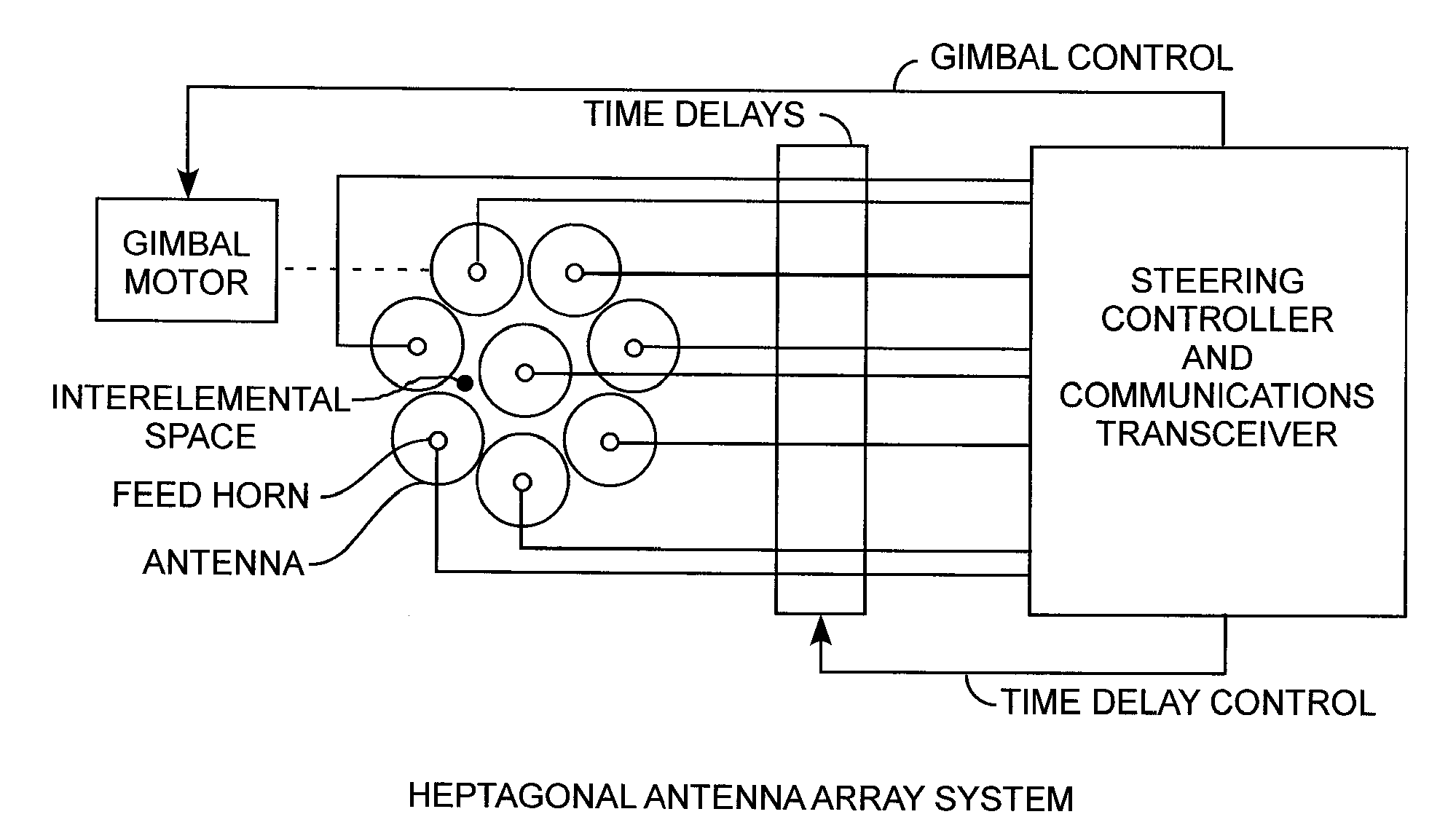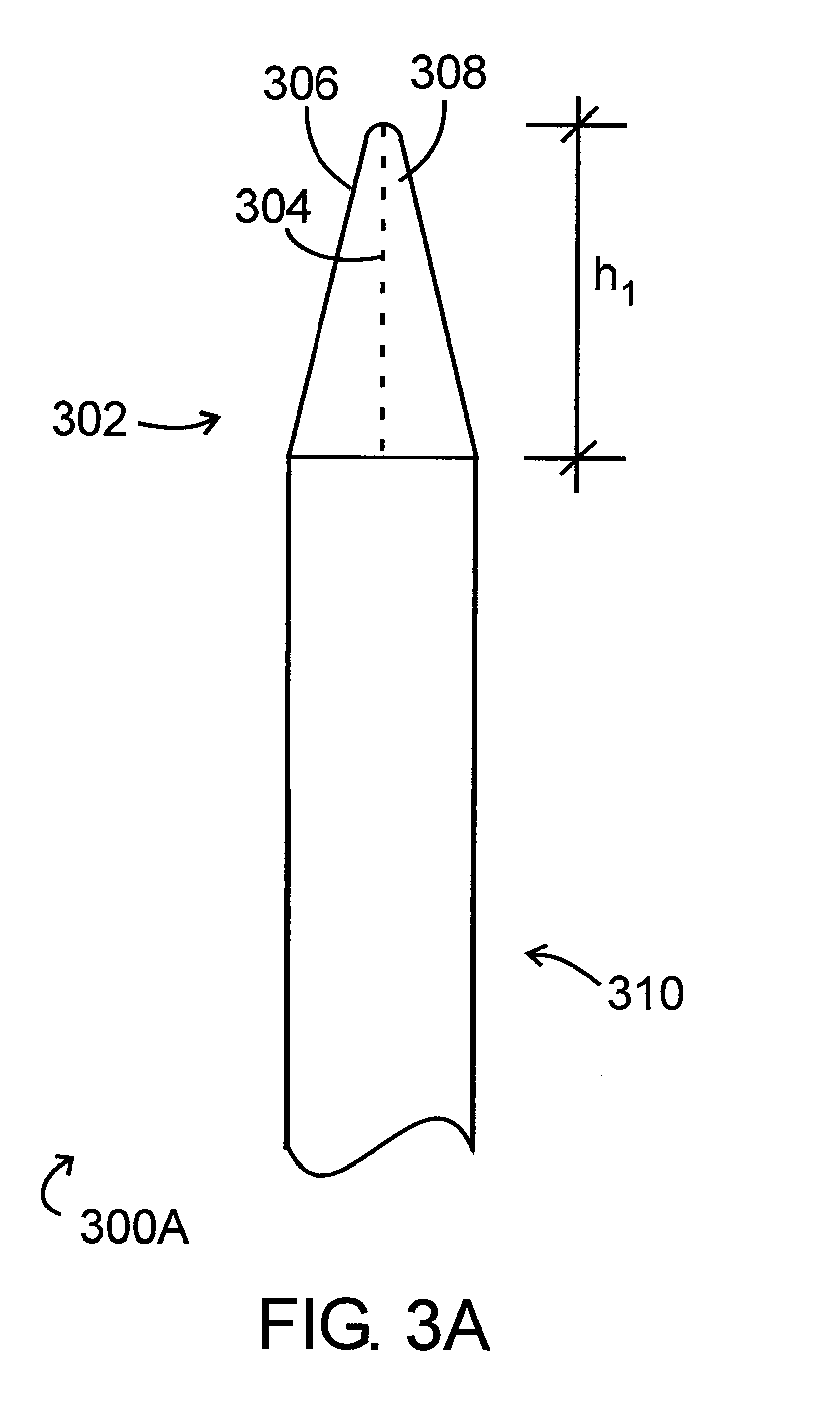Heptagonal antenna array
a technology of antenna array and antenna array, applied in the field of heptagonal antenna array, can solve the problems of gimbaled steering, requiring time delays, electrical signal interference affecting the amount of sidelobe rejection, etc., and achieve the effect of increasing sidelobe rejection
- Summary
- Abstract
- Description
- Claims
- Application Information
AI Technical Summary
Benefits of technology
Problems solved by technology
Method used
Image
Examples
Embodiment Construction
[0045]An embodiment of the invention is described with reference to the figures using reference designations as shown in the figures. Referring to FIG. 1, a heptagonal antenna array includes a center antenna element with seven surrounding antenna elements.
[0046]Preferably, the seven surrounding elements are equiangularly disposed about the center antenna element. Preferably, the seven outer elements are in juxtaposed positions about the center element. As such, there is an interelemental space created between the center element and the outer elements, which interelemental space is disadvantageously, significantly increased.
[0047]A steering controller and communications transceiver is conventionally attached to the array. The seven outer reflectors are positioned in a circle so as to touch, but do not overlap. There is equal separation between the innermost reflector and each of the outer reflectors. Preferably, the eight elements are identical reflector dish antennas, each having a ...
PUM
 Login to View More
Login to View More Abstract
Description
Claims
Application Information
 Login to View More
Login to View More - R&D
- Intellectual Property
- Life Sciences
- Materials
- Tech Scout
- Unparalleled Data Quality
- Higher Quality Content
- 60% Fewer Hallucinations
Browse by: Latest US Patents, China's latest patents, Technical Efficacy Thesaurus, Application Domain, Technology Topic, Popular Technical Reports.
© 2025 PatSnap. All rights reserved.Legal|Privacy policy|Modern Slavery Act Transparency Statement|Sitemap|About US| Contact US: help@patsnap.com



